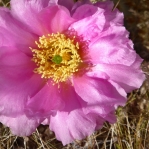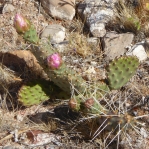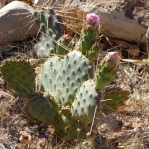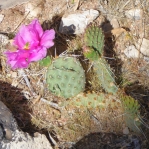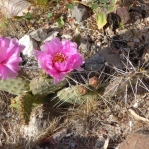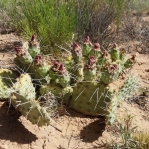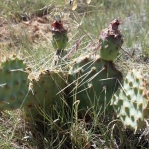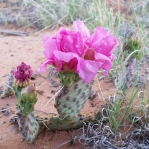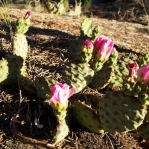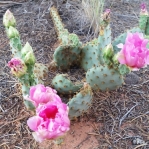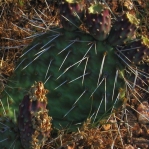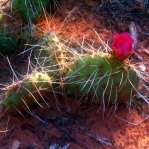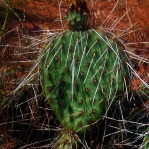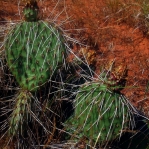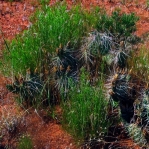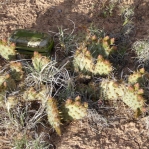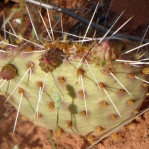
Parfitt, Rhodora 99(899): 223, 1997
Herbarium; Herbarium; Herbarium; Herbarium; Herbarium; Herbarium; Herbarium; Herbarium; Herbarium
Original Description
What is Opuntia pinkavae?
Opuntia pinkavae is a small prickly pear cactus. Long before the publication of the name, pinkavae, this Opuntia was distributed under the name O. kaibabensis. However, that name was never officially published. It is a member of the dry-fruited O. polyacantha group.
Details
This prickly pear cactus has ascending to prostrate branches to 10-25 cm tall. Pads of this Opuntia are not fragile and are green, flattened, and narrowly to broadly obovate. Pads are 6-15 cm long and 3-10 cm wide (larger than O debreczyi). There are (0)1-3(4) spines in the distal 25% to 50% areoles, but up to 75% of areoles may have spines. Some plants may have essentially no spines. Spines are porrect to reflexed, whitish at maturity but may have brown bases. Spines of this prickly pear cactus may be up to 50-70 mm long.
Flowers of O. pinkavae are generally purple or magenta and 25-35 mm long. Filaments are yellow to red-orange to magenta; anthers are yellow, and the white style is topped by a green stigma. The fruits are dry at maturity, 20-30 mm long and about 20 mm wide. Seeds are tan, oval to subcircular, and warped with a protruding girdle.
O. pinkavae is octoploid.
Other Notes
This Opuntia is a small prickly pear cactus with compact clumps of pads 8 to 15(20) cm tall, normally growing from a central root system dominated by thickened taproot. The pads are bluish-green and generally tuberculate with small areoles set relatively far apart and bearing 0 to 2(4) slender spines. The flowers are pink with green stigmas. Sometimes flowers are magenta or nearly white, but apparently never orange or yellow. The fruits are dry, and the seeds relatively large and irregular in outline.
This Opuntia is found in the Arizona Strip of northwestern Arizona and southwestern Utah; it is also found north up some of the valleys of southwest Utah, perhaps 50 or more miles. It might occur in adjacent Nevada too but isn’t documented from there yet. It is a grassland and high desert prickly pear cactus.
O. pinkavae is cold-hardy and tolerant of many garden conditions. Because is small and compact and has bright flowers, it is an excellent addition to gardens.

